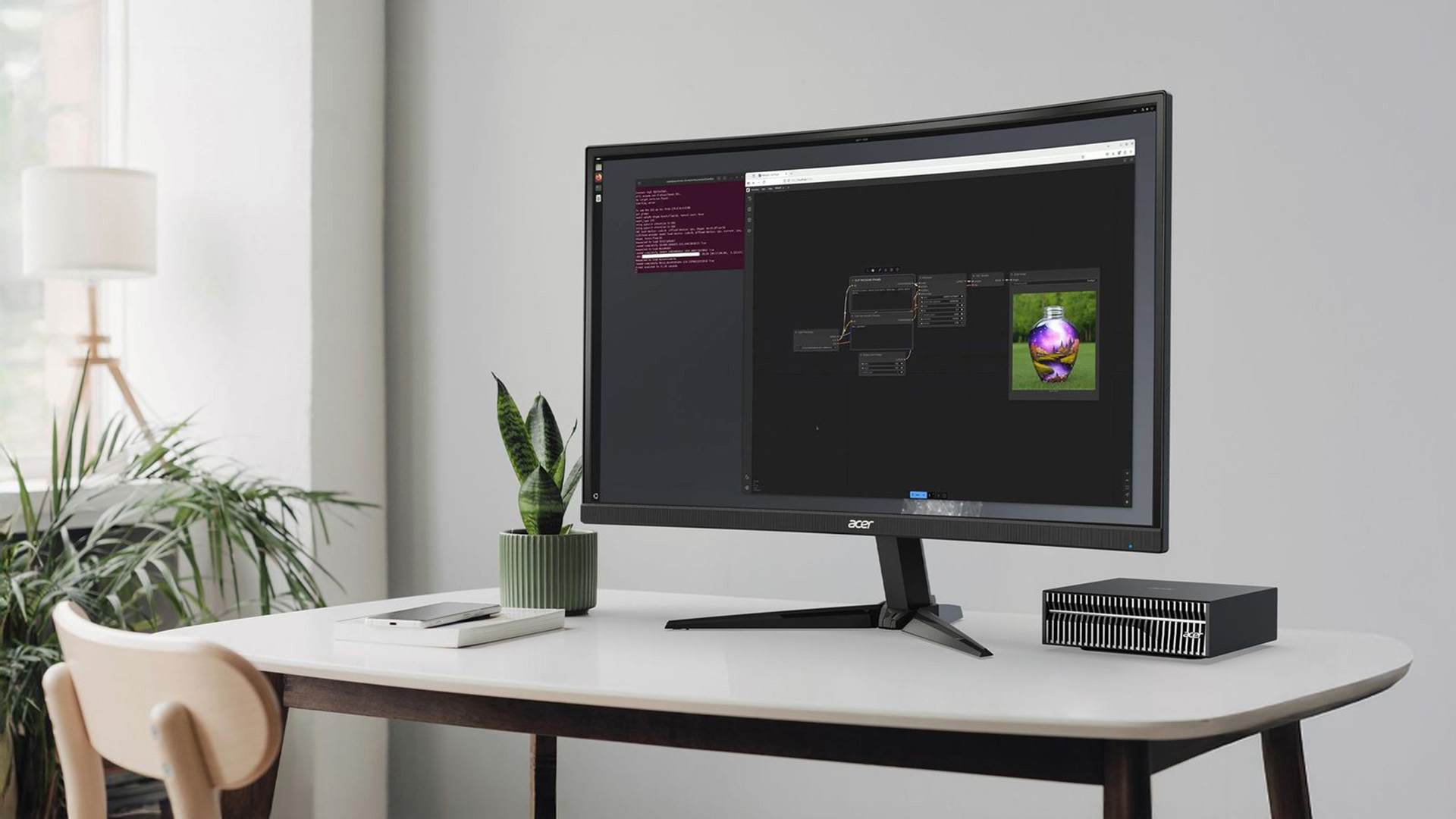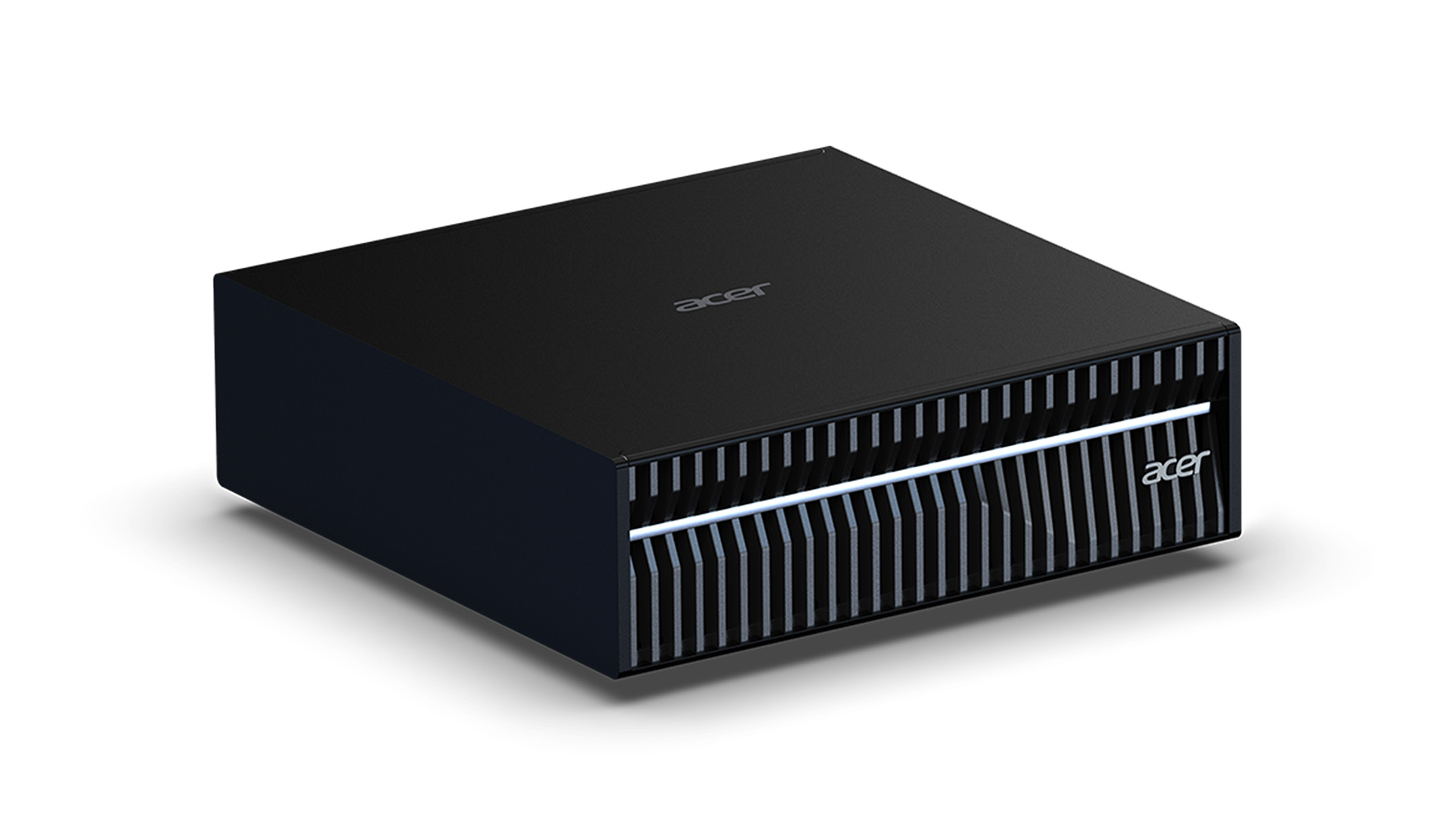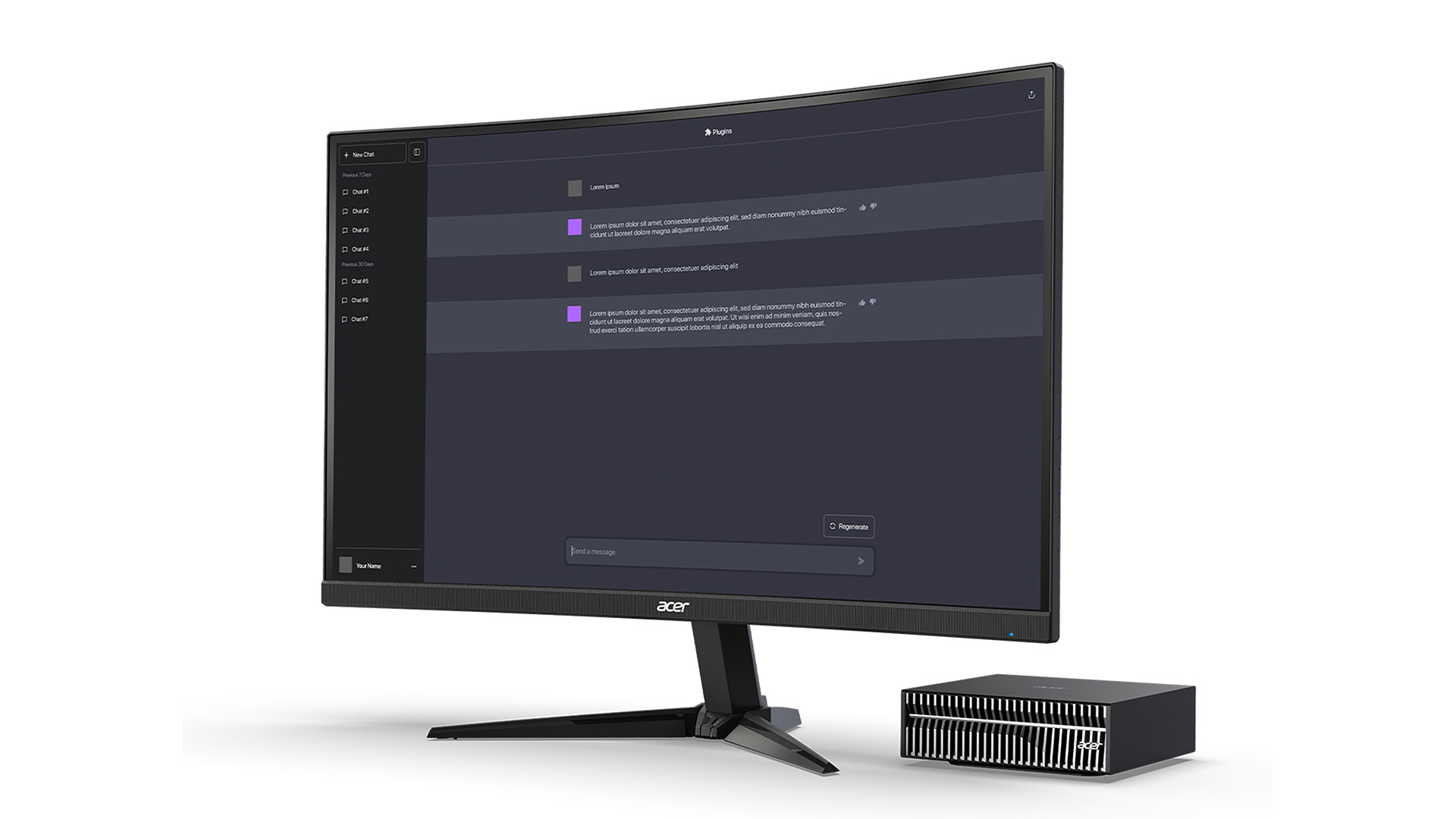Acer unveils Project Digits supercomputer featuring Nvidia's GB10 superchip with 128GB of LPDDR5x
Acer joins Asus, Lenovo, and Dell with its third-party Project Digits variation.

Acer has unveiled its own version of Nvidia's Project Digits mini-supercomputer, the Acer Veriton GN100 AI Mini Workstation, which is geared toward developers, universities, data scientists, and researchers who need a compact and high-speed AI system. North American pricing starts at $3,999.
The Veriton GN100 is a compact mini-PC (measuring 150 x 150 x 50.5mm), that comes housed in a black chassis with a silver grill on the front. The system features Nvidia's GB10 Grace Blackwell Superchip, which has 20 ARM CPU cores (10 Cortex-X925 and 10 A725 cores), and a Blackwell-based GPU sporting one petaFLOP of FP4 floating point performance. The GB10 Superchip is fed by 128 GB of LPDDR5x memory and can house up to four 4TB of M.2 NVMe storage with self-encryption capabilities.



I/O includes four USB 3.2 Type-C ports, one HDMI 2.1b port, an RJ-45 Ethernet connector, and a proprietary Nvidia ConnectX-7 NIC that allows two GN100 units to work in tandem — similar to SLI on older Nvidia graphics cards. The Veriton GN100 also supports Wi-Fi 7 and Bluetooth 5.1 for wireless connectivity.
Thanks to the inclusion of Nvidia's GB10 chip, the GN100 benefits from Nvidia's AI software stack — giving AI developers all the tools they need to develop and deploy large language models and other AI-based tools. Nvidia's software stack includes the CUDA toolkit, cuDNN, and TensorRT, and supports popular AI frameworks, such as TensorFlow, PyTorch, MXNet, and Jax.
Acer's Veriton GN100 is one of several third-party variants of Nvidia's Project Digits mini-supercomputer. Acer, Lenovo, Asus, and Dell have built their own versions of Project Digits featuring different chassis designs. This is similar to the way Nvidia partners with third-parties for its graphics cards — Nvidia's Project Digits is the "Founders Edition," while Acer, Lenovo, Asus, and Dell will offer third-party variations with identical specs and performance. Third-party versions can offer benefits, such as better warranties and extra software support, and are often discounted cheaper than Nvidia's OEM version.
These new Nvidia-powered mini-computers are designed to provide a high-speed, local AI solution for users who don't want to deal with the footprint or headache of a full-blown AI supercluster. A high-speed AI system can be useful for keeping sensitive data offline, minimizing latency, and optimizing performance.
Some might argue that building an RTX 5090-powered gaming/workstation system might be better — and, on the surface, that's probably true. But Nvidia's GB10 supports 128GB of system memory and has native support for Nvidia's proprietary NVFP4 — two important factors for dedicated AI work, which the RTX 5090 cannot provide. The extra memory allows users to run AI models that would be impossible on a single RTX 5090, and NVFP4 is a new FP4 standard that can significantly improve processing efficiency in AI workloads (with accuracy that approaches BF16).
This makes Nvidia's Project Digits architecture much more attractive for dedicated, professional AI developers. As of this writing, Acer has yet to announce an exact release date for the Veriton GN100, though it has said that availability will vary by region.
Follow Tom's Hardware on Google News, or add us as a preferred source, to get our up-to-date news, analysis, and reviews in your feeds. Make sure to click the Follow button!
Get Tom's Hardware's best news and in-depth reviews, straight to your inbox.

Aaron Klotz is a contributing writer for Tom’s Hardware, covering news related to computer hardware such as CPUs, and graphics cards.